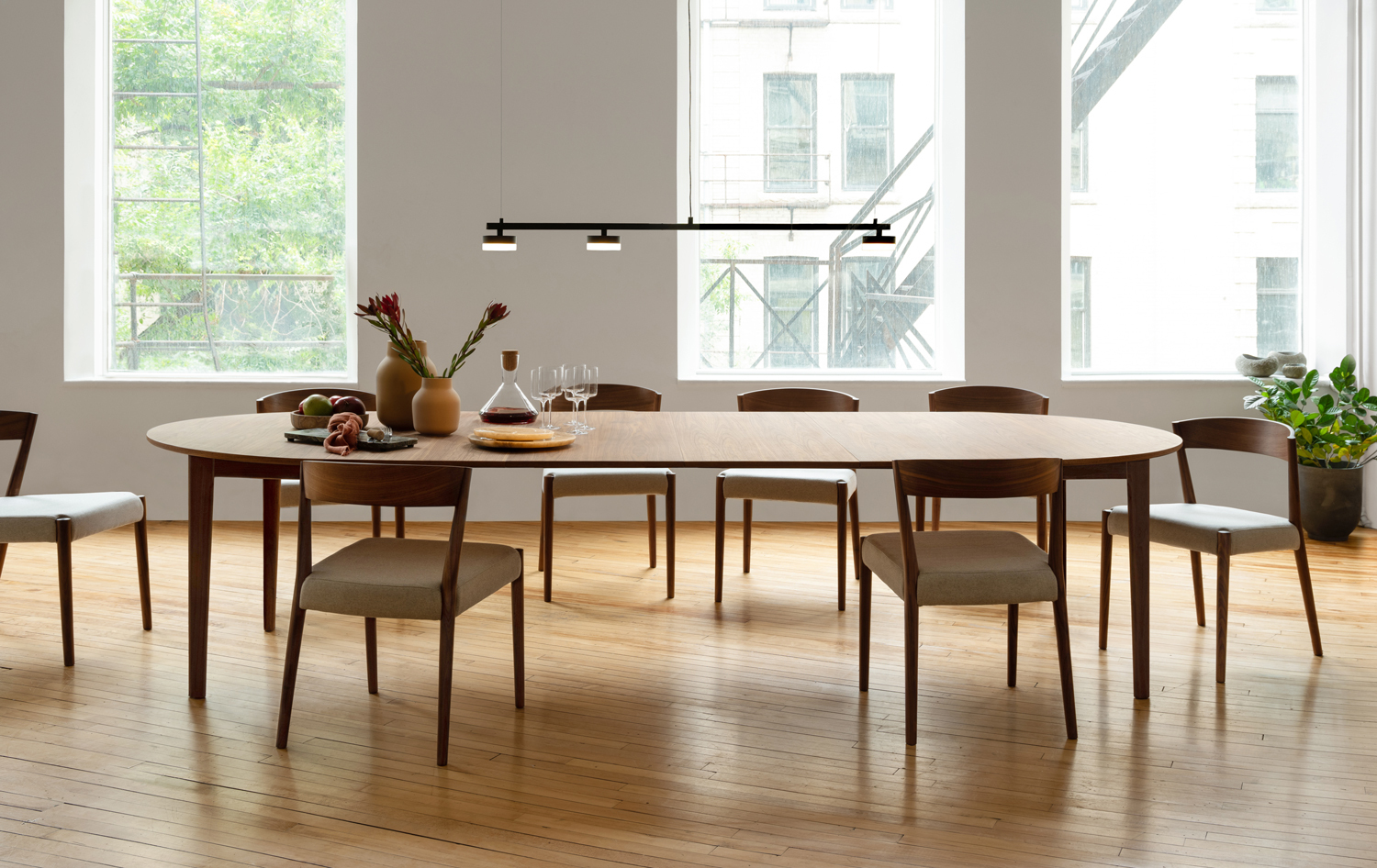We may earn revenue from the products available on this page and participate in affiliate programs.
For so long, busy lives meant the seated family dinner was put on the back burner, replaced by on-the-go meals and takeout. But since March, that all changed—everyone started baking bread, working from home, and embracing the extra moments spent with family. The dining room went from overlooked and underused to a centerpiece of the house—it’s a desk by day, a gathering space at night, a gaming destination in the evening. As a result we’re reimagining how the space functions and thinking about new ways we can make it feel like a focal point.
From playfully mixing chair styles to adding black accents, four interior designers tell us the furniture and decor trends from Canadian brand EQ3 that will prevent your dining room from looking like an afterthought.
Don’t Be Afraid of Commitment
Interior designer Natalie Myers says her clients are looking for permanence—and with that comes quality. “People are investing in high-quality natural materials for their dining tables, like stone and wood. Styled with large ceramic urns filled with wild branch arrangements and sculptural hanging lighting fixtures, these are not fly-by-night dining rooms,” she explains. Since she doesn’t see the focus on the dining room fading, Myers notes it’s worth investing in pieces that will outlast years of family gatherings and dinner parties.
Keep Things Casual
As we continue to spend time at home, it makes sense that we’re gravitating toward more casual configurations. “People want a space that can be flexible—they want to work from the dining room and enjoy a great meal,” says Calgary-based interior designer Alykhan Velji, citing increased demand for banquette seating. “Banquettes provide ample seating space but also feel (and look) approachable.” If you’re not ready to commit to a banquette—or if you don’t have a nook to carve one out—start off with a simple bench and dining table pairing. Pro tip: Pile cushions on top for added comfort—and personality.
Opposites Attract
“Dining rooms are a great space to incorporate some character, be playful, and get a bit whimsical,” says interior designer Tamara Kaye-Honey, who suggests trying a mixed seating arrangement to add drama. “Pair a mid-century classic with an armless Parsons and you’ll have the perfect conversation starter when you see who picks what seat!”
Wren Dining Chair
EQ3Frank Dining Chair
EQ3Try a Moody Palette
Layering colors and textures are a must, says Velji. “Everything from linens and natural oak to caning and earth tones are perfect for introducing warmth to a space,” he says, noting his current favorite color palette consists of terracottas, mossy greens, and deep mustards. Oakland-based interior designer Carmen René Smith agrees: “I love using a mix of hues across the room—think: a deep, earthy green, like Benjamin Moore’s Vintage Vogue, on the walls; cushions in a velvety merlot; and comforting ochre woven linens. Combining these with brass and black metal finishes and cognac-toned leather can bring a cozy feel to a space.” To take things even further, Smith suggests offsetting neutrals with a pop of color—a bright pink pillow, a striking cowhide—for something unexpected.
Paint It Black
“Styling black furniture and decor can be intimidating,” says Smith. Incorporating black accents into a space is all about selecting the right complementary colors. “Just ask yourself: What mood am I going for?” she adds. Combining black with a creamier or blended shade will give a deeper, more sophisticated look. Combining it with a contrasting hue, like white, offers something more striking. Combining it with gold makes a room feel more opulent. Or go all in with a black-on-black design—”it gives a sexy, edgy vibe that we all sometimes crave,” notes Smith.


